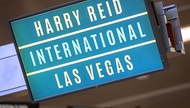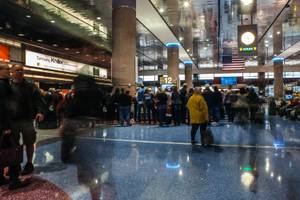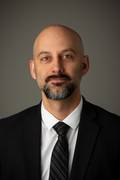What happens here doesn’t just happen.
Las Vegas can feel like a dream for its millions of annual visitors, an ideal oasis for grown-up fun or a perfectly efficient place to do business. It has evolved by design, from drive-in gambling getaway to preeminent international leisure and business destination thanks to strategic, cooperative thinking on the part of visionary individuals and organizations.
Different kinds of progress have been made along the way—giant leaps and baby steps—but one essential development set Las Vegas on its unique path in 1978. As today’s visionaries cope with a global pandemic and the economic fallout and uncertain future it has created, this crucial point in the past and the innovative ideas and plans formulated in that time seem especially powerful.
Today’s Las Vegas is built upon air travel, and that growth began 42 years ago with the Airline Deregulation Act. It introduced a free market in the commercial airline industry by removing government control over fares, routes and the launch of new airlines, immediately boosting the number of flights and reducing costs for passengers.
In Las Vegas, airlines servicing McCarran Airport doubled from seven to 14 in two years. As the airport and the city continued to grow, it would take about a decade for airport traffic counts to spike (from 10.6 million total passengers in 1979 to 19.1 million in 1990), with many visitors still driving to Las Vegas (from 11.7 million visitors in 1979 to just under 21 million in 1990).
The strategies that developed after deregulation were more significant than immediate growth, as the airport devised an ambitious plan called McCarran 2000, a multitiered expansion based on the projection of between 20,000 and 30,000 daily passengers in the year 2000. (The airport ended up with 36.9 million passengers that year and an all-time high of 879 average daily flights). And local tourism and travel officials began to build on groundbreaking partnerships that had been established years earlier.
“In the early 1970s, the airlines were controlled by the Civil Aeronatics Board, and for an airline to get a new route into Las Vegas, they had to make a case in front of that board in Washington, D.C. That was very difficult to do,” says Rossi Ralenkotter, former chief executive of the Las Vegas Convention and Visitors Authority. “Part of that was convincing the board there was [an] economic need to add a flight or a new carrier. So we’d work with McCarran on behalf of the carrier to try to convince the CAB.”
That process and the CAB faded away after deregulation, which wasn’t the only factor that made it easier for more flights and carriers to make their way to Las Vegas.
“There was great cooperative spirit that allowed these things to happen over the course of the last 50 years,” Ralenkotter says. “[1978] was also the year Atlantic City legalized gambling, so we had another state competitive with [the] gaming in Las Vegas. We [also] had new hotel properties coming online, and they were increasing convention and meeting space, and we needed to increase our market share. So we reached out and said, ‘Let’s do something different,’ and started working more with McCarran to implement a game plan.”
This was unusual. Destination marketing organizations in other major cities didn’t have strategic plans to create more domestic and international air service, Ralenkotter says.
In addition to collaborating with airport officials to meet with airline route managers and make the case for more flights and carriers, the LVCVA sent officials to make presentations to travel agents across the country, specifically promoting the experience of flying to Las Vegas. Those companies expanded on the casino-generated model of gaming junkets by way of chartered planes to create popular four-day, three-night packages that made use of new flights.
At the same time, Las Vegas was recruiting regional and national conventions and business expos to take advantage of the new, modern meeting spaces at the Las Vegas Convention Center and growing resorts.
“We had the support of resort operators, and sometimes they’d join us for sales calls to the airlines,” Ralenkotter says. “We’d all go down and do a presentation, not only for their marketing people but for presidents and CEOs, as well as route managers. It was a joint effort to educate them on Las Vegas, but most importantly, to show that service to Las Vegas was profitable.”
*****
Chris Jones, chief marketing officer of McCarran International Airport—renamed that way in 1968—grew up in Las Vegas and remembers trips to the airport in the early 1980s, when there was a scale model of the McCarran 2000 expansion plan under a plexiglass case on the concourse. He recalls his father looking at the model and scoffing, because he was sure Las Vegas would never need an airport so big.
“He thought everybody had lost their minds, but by the late 1980s we were already looking at what we needed to do to get even bigger,” Jones says.
Today, as part of his job in McCarran’s Air Service Development department—focused on new carriers and existing ones launching new routes to Las Vegas—Jones routinely meets with airline officials, sometimes many in a single process not unlike speed-dating.
“You don’t see a convention center operator or a group like [the LVCVA] at those meetings, and certainly not with the airport,” he says. “People from other airports have asked to see our agreement or asked about the particular class of contract or memorandum we have, and they can’t understand when I tell them there is no contract. There is no formalized agreement that guides what we do. We do it because it’s in everybody’s best interests.”
Vegas air travel growth has been consistent since the airport broke the 10 million passenger mark for the first time in 1979, with the biggest gains occurring in conjunction with the megaresort boom on the Strip that began with the Mirage in 1989.
McCarran’s passenger count was 17.1 million that year, with Las Vegas visitor volume at 18.1 million; 10 years later when Mandalay Bay, the Venetian and Paris Las Vegas opened in a seven-month span, the airport totaled 33.7 million passengers, and Vegas tallied 33.8 million visitors.
The rise of low-cost carriers in the ’70s and ’80s—airlines adopting a point-to-point model with more short, nonstop, regional flights and smaller aircraft—also provided a big boost for Las Vegas. Small-town residents across the country, especially in the Midwest, gained direct access to the glamorous brand of Vegas and became a heavy marketing target.
With so many daily flights in and out of McCarran, it may feel like Southwest Airlines is based in Las Vegas rather than Dallas. That distinction actually belongs to Allegiant Travel Company, founded in Fresno, California, in 1997 and restructured and relocated to Las Vegas in 2001. Allegiant has thrived as a unique airline dedicated to affordable and convenient leisure travel, a perfect fit for Vegas.
*****
Domestic air travel has been the prime engine for Nevada’s tourism and convention-based economy, but developing direct-to-Vegas international opportunities was another significant component in the original post-deregulation plan.
Ralenkotter began his career at the LVCVA in 1973 as a marketing research analyst. During his tenure as president and CEO from 2004 to 2018—and prior to those years while he served as the authority’s executive vice president and senior vice president of marketing—the expansion strategy was always rooted in numbers and analysis.
“It’s always been research-driven, looking at the numbers and the demand side as we continued to add more to what makes up Las Vegas today and what gave us more things to market and sell,” he says. “As far as international travel, you look at trends in other countries and the growth of those countries coming to the United States, see what states they’re visiting, and you start cultivating.”
The LVCVA’s first foothold in that realm was establishing international offices in Tokyo, London, Frankfurt, Paris, Rome and other destinations where Las Vegas could interface with tour operators and wholesalers looking to book hotel stays and provide public relations activities promoting the destination. Megaconventions that draw an international crowd like the Consumer Electronics Show (CES) and the Specialty Equipment Market Association (SEMA) show setting up shop at the Convention Center also boosted the city’s global profile, and tourism officials continue examine the markets from which those delegates come and work with airlines to maximize growth potential.
Despite focused efforts in the United Kingdom and strong relationships with European airlines like Lufthansa and Air France, Vegas didn’t break through with nonstop service over the Atlantic Ocean until a nine-year effort culminating with a pitch in mogul Richard Branson’s living room finalized Virgin Atlantic’s service from London Gatwick Airport to McCarran in 2000. Virgin started with four flights a week and eventually moved to daily service.
“Now we’ve got all these different carriers. It doesn’t stop. We’ve been doing outreach many years with India, where the infrastructure and the economy continues to grow. That will eventually be a strong market,” Ralenkotter says. “Las Vegas never sits still. It’s always on the cutting edge of entertainment and shopping and dining and everything a destination should be. Another strong example of that is sports with the Raiders, the Knights and the Aces.
“The innovators in this city are always looking at ways to offer more exciting things, and there’s a belief that if you put it in Las Vegas, it will be successful and people will come. The world has been exposed to what Las Vegas has to offer, and it’s a different experience every time you come here.”
*****
Las Vegas and the airline industry have matured together and grown to rely upon one another in very permanent ways. As Strip resorts prepare to reopen after nearly three months of coronavirus-caused closure and a set of unprecedented circumstances bringing about the darkest days for tourism and travel at large, it’s unknown when people in the United States or overseas will feel comfortable flying into Las Vegas or any other destination for any nonessential purpose.
Boeing Company President and CEO David Calhoun recently told NBC News he believes one of the country’s major carriers could be forced out of business by the pandemic, saying “the threat to the industry is grave. There’s no question about it. And apocalyptic does actually describe the moment.”
There is one certainty Las Vegas and any surviving airline will share, however: Both must emerge as strong leaders in their fields if there’s any hope of returning to the overwhelming success of the past. Perception is essential, and travelers will need to believe they’re protected in order to purchase a ticket for a flight. This is especially true for international visitors who want to return to Las Vegas but might be watching the U.S. response to coronavirus with doubt and dread.
Las Vegas is a global leader in hospitality, and it must find ways to remind and reassure the world that’s still the case. The immaculate safety plans that have been released by leading local gaming companies are a big step in that direction.
Airlines have been producing similar strategic plans. Allegiant has unveiled its Going the Distance for Health and Safety program, which includes cleaning and disinfection, air purity and low-touch service initiatives. The hometown company has also announced several measures aimed at strengthening its balance sheet, like cutting airline capacity and ceasing activity on non-airline projects such as construction of its Sunseeker Resort in Florida.
“As a domestic airline with a unique business model serving primarily leisure travelers, we were better positioned than most to withstand the early impact of COVID-19 on travel,” Allegiant Chairman and CEO Maurice J. Gallagher Jr. said in a recent statement. “But this is a situation which is changing daily, and we are focused on taking proactive steps to protect the health and safety of our customers and team members, and to ensure our resilient company can continue to provide access to convenient, affordable nonstop travel.”
JetBlue Airways, which began service to Las Vegas in 2017 and was the first major U.S. airline to require masks for passengers and waive change and cancel fees, is focusing on temperature checks for crew members who interact with passengers, more space with fewer touch points on flights, clean air and surfaces and travel flexibility with its Safety From the Ground Up program. In a video message sent to customers, JetBlue President Joanna Geraghty explained how cabin air in the company’s aircraft is filtered through a HEPA filter that captures more than 99 percent of airborne microbes including the coronavirus, and how that filtered air is changed completely about every three minutes.
In a similar video message from United Airlines’ first-year CEO Scott Kirby, safety was deemed the top priority. “We’re not leaving a single stone unturned in our pursuit to protect our customers and employees,” Kirby said. “We are installing plexiglass in lobby and gate areas, we’re using the same equipment used to clean hospitals to disinfect the interiors of our aircraft, all crew and customers on board are required to wear face mask coverings and we’re taking the temperature of our employees before they start work.” United is also working with Clorox and the Cleveland Clinic on its United CleanPlus sanitation quality assurance program.
*****
A trip to Las Vegas begins and ends at McCarran, and as it has done for the better part of the last half-century, the airport is leading by example. It made national headlines with the introduction of vending machines offering masks, gloves and hand sanitizer, and last week McCarran launched the “LAS All In” public awareness campaign to educate travelers on how they can stay safe and healthy.
Airport management is emphasizing four main areas of COVID-19 mitigation: cleaning and sanitizing using hospital-grade products; encouraging and coordinating social distancing in multiple ways; minimizing the number of people in facilities; and reducing the number of personal interactions and contacts with tools like online check-in and self-serve kiosks.
“We want to be at the forefront,” Jones says. “We’ve made a lot of tech advances over the years, like kiosks that are shareable for multiple airlines, where you can get your boarding pass whether you’re on United or Delta from the same machine. We were among the first airports with free Wi-Fi. We know this is the first look and the last look at Las Vegas for close to half the people that come here, and we want them to have a good experience when they arrive and when they leave.”
Jones points out that for a long time, a good experience at an airport was one that went largely unnoticed, something smooth and seamless. But in recent years the philosophy at McCarran has changed. It’s still in Las Vegas, after all, and people want to know where they are.
Now, the music you hear at the airport was recorded by an artist from Las Vegas or one with a residency on the Strip. The artwork contributes to that sense of place, too, whether it’s a mural crafted from drawings by thousands of local students or the “Echoes of Las Vegas” painting by Adolfo R. Gonzalez displaying different generations of the Strip.
It’s reassuring to consider that the creativity of Las Vegas has been applied to every aspect of designing the destination, including the airport. That kind of care and thoughtful effort will be required to warmly welcome visitors here in the future, and it builds confidence that when those hundreds of daily flights return, Vegas will be ready.







